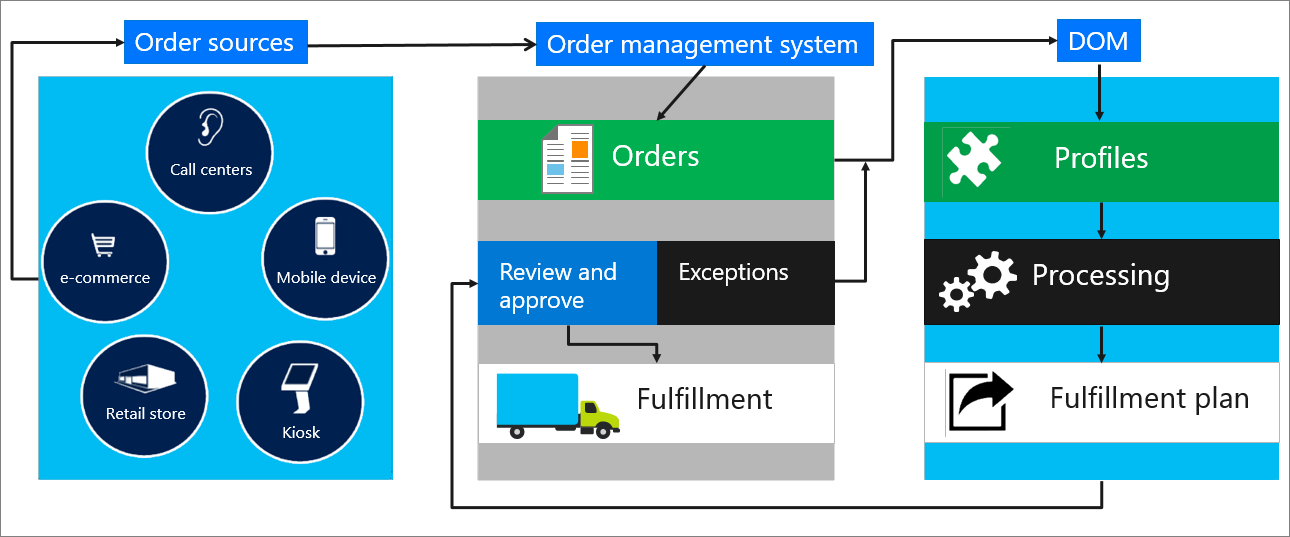Distributed order management (DOM) policy
To help improve the customer experience, retailers must have visibility into their inventory in real time, across all their channels. A single, holistic view of all the inventory can help optimize order fulfillment, allocation, and distribution. Therefore, adopting and implementing a distributed order management (DOM) system is becoming imperative for retailers.
DOM optimizes order fulfillment across a complex network of systems and processes. It relies on a single, global view of inventory across the whole organization to intelligently manage orders, so that they are fulfilled accurately and in a more cost-effective manner. By improving the efficiency of a retailer's supply chain, DOM helps the retailer better meet customer expectations.
The distributed order management is mostly used in retail industries.
The following illustration shows the lifecycle of a sales order in a DOM system.

Here are some things to consider when you use the DOM feature:
Currently, DOM only considers orders that are created from retail channels. Sales orders are identified as retail sales orders when the Retail sale option is set to Yes.
DOM is not tested with advanced warehouse management features. You must be careful to determine whether DOM is compatible with the advanced warehouse management capabilities and processes that are relevant to them.
DOM is available only on the cloud version of Dynamics 365 Commerce. It isn't supported in on-premises deployments.